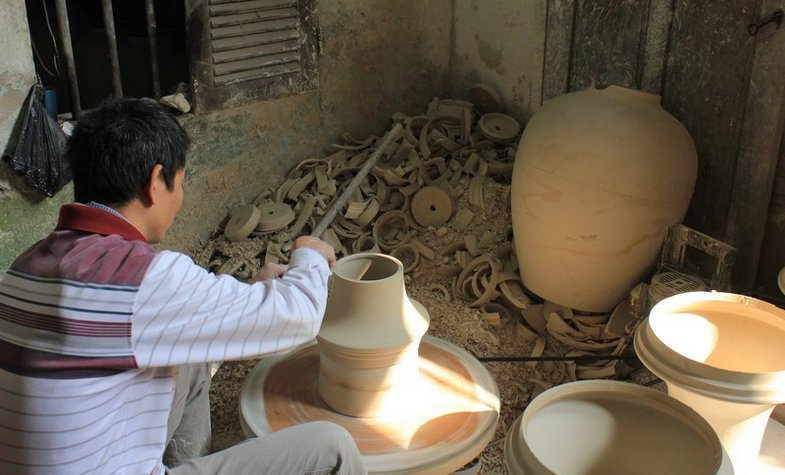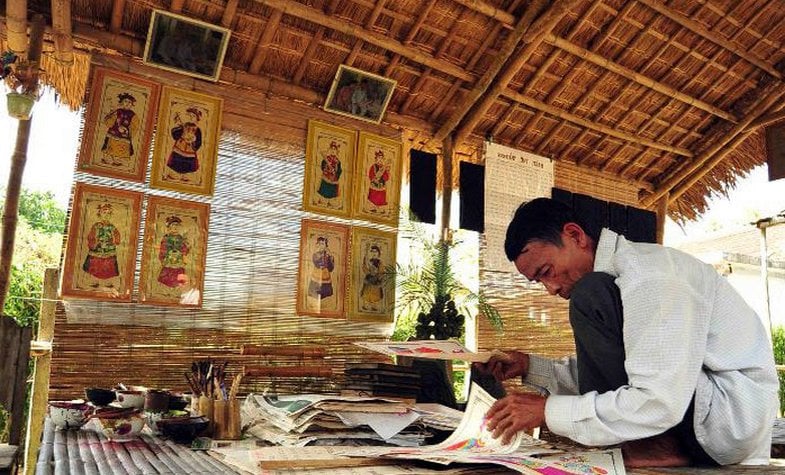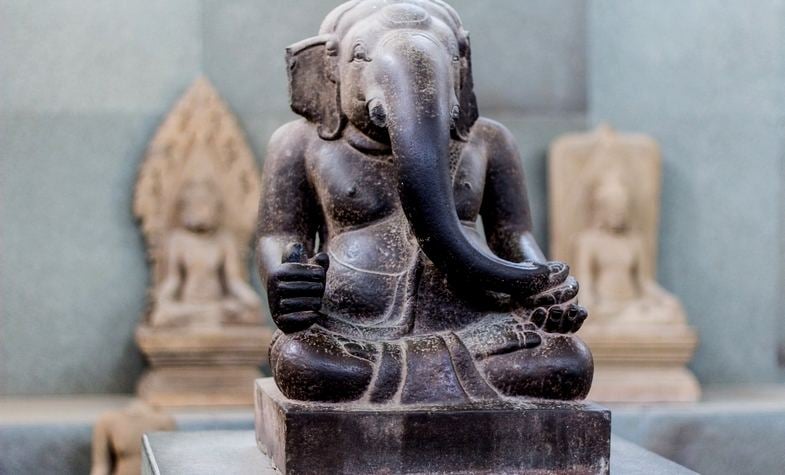Handicraft villages in Vietnam
Vietnamese traditional handicraft villages have been well-known due to their important role in the country’s history and economy. The skillful products with unique features are a pride of the village and that is the reason why the name of the village is always included in their brand name. A day trip to a handicraft village will surely bring you genuine images of Vietnamese culture as well as funny moments by making a sample to bring home on your own. Below is the list of some famous handicraft villages in Vietnam that we would like to guide you through.
1. Bat Trang Porcelain village (Hanoi)
Located on the other side of Chuong Duong Bridge and 13 kilometers away from
Hanoi center, Bat Trang porcelain village is one of the most well-known traditional handicraft villages in Vietnam. The old people told that the village was established in the 14th - 15th century and perhaps even earlier since the Le dynasty. It was the place where local artisans lived and created beautiful porcelain artworks combining traditional and modern techniques. After many years, a big village has been developed and become the place specializing in ceramic products which are sold throughout the country and exported worldwide. The important factor that makes Bat Trang products different from others is the high quality of glaze, the variety of colors, and the imaginative decorations on products with impressive special designs.

2. Van Phuc silk village (Hanoi)
Located in Ha Dong (Hanoi) and near Nhue Riverbank, Van Phuc reserving the unique features of a typical traditional handicraft village is famous for providing the best quality silk in Vietnam. Once visiting the village, you will encounter lots of familiar images of the Vietnam countryside such as the great banyan tree, the well, the temple’s large yard, the local market, and also hear the sound coming from the looms weaving the silk. Silk originated from Van Phuc is different from the others by its smooth, soft, light-weight, and elegant appearance. Especially, people wearing this type of silk can feel cool in the summer and warm in the winter. Nowadays, the demand for silk products has urged Van Phuc village to expand their merchandise and diversify the garments to meet clients’ needs.
3. Dong Ho folk painting village (Bac Ninh)
Located in Thuan Thanh District (Bac Ninh Province), Dong Ho village is well-known for its long existed folk paintings dated since around the 16th century. The raw surface material is a special kind of paper called “Giay do” and the colors are made from natural things such as bricks, seashells, specific leaves. burnt roots or bamboo. The popular subjects to be described through the paintings mostly are the normal local daily life, the traditional customs of Vietnamese, and the dreams of a happy life. People even say that you can read Vietnamese literature by looking at Dong Ho paintings as the images are simple and easy to understand. In the past, villagers only draw paintings on the occasion of the
Lunar New Year. Nowadays, they draw every day to adapt to the increasing requirement of tourists.

4. Van rice wine village (Bac Giang)
Located in Van Ha Commune, Van rice wine village is a famous special drink not only in Vietnam but also outside the country. Previously, Van rice wine was regarded as a formal gift for the king and served in royal banquets. Nowadays, both red and white wine is a typical drink in normal life. Made from carefully chosen high-quality sticky rice, a secret yeast, and pure water from the village’s well, the wine is glassy and tasty. Van rice wine is a favorite gift to buy in this province of Northern Vietnam.
5. Non Nuoc Stone Carving Village (Danang)
Founded at the foot of the Marble Mountains in the coastal city of Danang during the 18th century, Non Nuoc Stone Carving Village is among unique craft villages in Vietnam. The lifeless stones of the mountain through the skillful hands of carvers change to beautiful and useful products serving local people’s daily life. To preserve the traditional village, all of the carvers are highly aware of the importance of maintaining the relic site as well as protecting their valuable skills. Recently, more than 300 carving businesses residing in the village enable the products to be expanded and become one of the highest value exports of the city.

6. Phu Vang conical hat village (Hue)
Phu Vang conical hats are chosen favorable products of many people due to their thinness, light color, and charm in the sewing. For many years, the conical hat in combination with “ao dai” is the traditional image and beauty of Vietnamese women. Most people wear the conical hat whenever they leave home and from that, it has naturally become a close “friend” of them regardless of time changing. The conical hats coming from Phu Vang as well as other regions in
Hue always have 2 layers and are later covered by oil and dried under the sun to ensure durability and beauty. Nowadays, to make it more charming, craftsmen also add paintings of some iconic sites of the city such as the Perfume River, Ngu Mountain next to verses.
7. Kim Bong carpentry village (Hoi An)
Located in Cam Kim Commune, Kim Bong is a traditional carpentry village dating back to the 15th century that features unique cultural values and a wide range of artistic works. Although Kim Bong’s products are not advertised widely, it still attracts lots of domestic and international tourists by its beautiful and impressive woodwork. Kim Bong carpentry’s style is a perfect combination of China, Japan, the Cham kingdom, and the skillful hands of Vietnamese craftsmen. Upon visiting the village, you will be welcomed by the sounds of punching of wood and you will be able to get more knowledge of carvers’ daily work as well as buy some interesting items for your friends.
8. My Nghiep - Chung My Cham brocade weaving-making village (Ninh Thuan)
The unique technique by using the traditional weaving method that is still maintained at My Nghiep – Chung My Cham brocade weaving-making village has well preserved the materials and every single pattern on the brocade products. Visiting this village, you will have the chance to observe the process to weave the brocade under the skillful hands of the craftsmen. After years, the type of brocade products at the village have been more diversified to adapt to the increasing demand of tourists as most of them wish to buy some souvenirs for their families as the special things of
Ninh Thuan.

